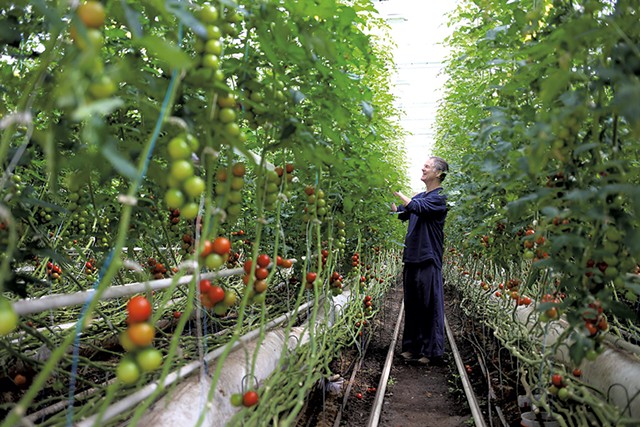
- Sarah Priestap
- Dave Chapman
The weather forecast in East Thetford on a recent Friday called for snow flurries, but stepping into a greenhouse on Dave Chapman's Long Wind Farm evoked a very different season.
The air was warm and moist, and, as far as the eye could see, robust tomato plants climbed 11-foot guidelines toward the light. Their thick stalks dripped with crimson fruit that exploded summer-sweet and juicy in the mouth.
These are the sort of tomatoes that Vermonters expect to find on a farmers market stand in late July: fully ripe, with delicate skins that break easily to reveal richly hued flesh and rounded flavor. They're nothing like the big, pale, rubber ball-textured slicing tomatoes, or the pints of sweet but characterless grape tomatoes that are shipped these days thousands of miles to supermarkets year-round.
Long Wind Farm sells pints of multicolored, jewel-toned cherry tomatoes whose quirky, artist-designed labels describe them as grown in Vermont and certified organic. A grinning tomato raises its fists proudly over the slogan "Real tomatoes ... with real attitude!"
What the label doesn't currently specify is that Long Wind grows its tomatoes in soil. To Chapman and many organic farmers, that's a given. It's a foundational and nonnegotiable principle of organic farming, they believe, that producing healthy food both requires and contributes to a healthy environment achieved by carefully managing the soil.
This is why Chapman believes that produce grown hydroponically — not in soil but in water — should be excluded from organic certification. And he's spent countless hours over the past few years trying to remedy what he and many other organic farmers see as egregious misinterpretation of USDA Organic seal standards. Right now, consumers might find that seal on tomatoes that sit beside Long Wind's in the organic produce section with no disclosure of their hydroponic cultivation.
For farms large and small, the right to use the label "organic" is crucial. In fact, the stakes could not be higher, economically and environmentally.
According to the North American membership-based Organic Trade Association, organic food sales in the United States reached $43 billion in 2016 and claimed more than 5 percent of total food sales. This reflects an 8.4 percent, or $3.3 billion, increase over the previous year, a rate that greatly surpassed the 0.6 percent growth rate in overall food sales.
Whether hydroponics are allowed to carry the organic seal affects the entire market, because they are generally less expensive to produce than their soil-grown equivalents. With organic certification, they are likely to undercut produce like Chapman's on price, leaving consumers with two apparently comparable options at different price points.
The hydroponic issue is at the center of a high-profile debate that has expanded into a full-out battle over the integrity of the National Organic Program, the federal regulatory body that oversees certification standards and their enforcement. Chapman has become a leader in the movement to uphold what he sees as the original intention of organic standards — even if that means creating a new add-on label to help consumers understand what they're buying.
Before organic-certified hydroponics came to his attention, "I wasn't very political," Chapman admitted. As he dug "deeper and deeper," he said, "I realized it was the tip of the iceberg."
It all comes down to consumer transparency, he believes.
In a December 21 Washington Post article headlined "Organic food fraud leads Congress to weigh bill doubling USDA oversight," Chapman was quoted as saying, "There are systemic problems ... This is not just a few bad eggs. Unfortunately, consumers have no idea what they're getting with 'USDA Organic' anymore."
"What they're growing is not more affordable organic," he told Seven Days, referring to hydroponic producers. "It's fraud."
Starting With Soil
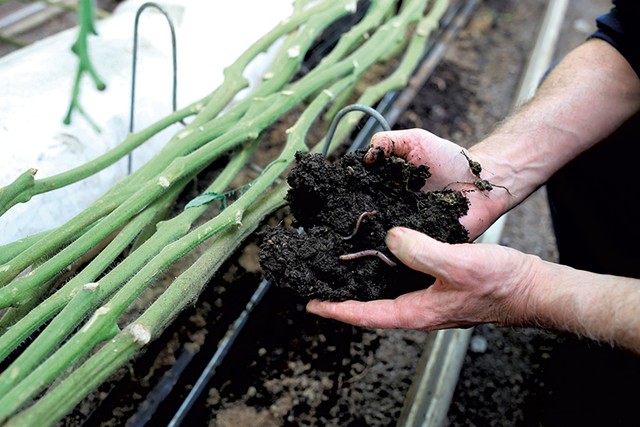
- Sarah Priestap
- Soil at Long Wind Farm
Chapman, 65, has been an organic farmer for almost 40 years. He started out with a "classic Vermont mixed vegetable farm," as he described it. Then, in 1990, seeking a viable agricultural business that allowed for more family time, he decided to specialize in soil-grown, organic greenhouse tomatoes.
In one of his East Thetford greenhouses, a bumblebee buzzed through the verdant canopy as he knelt to gather a handful of moist, rich soil. "There are a lot of good things happening here," he said, pointing out wriggling worms, sow bugs and a fine tangle of white roots. "We're trying to feed the life in the soil. The basic principle of organic farming is to feed the soil, not the plant."
Long Wind now produces close to one million pounds of tomatoes annually in two and a half acres of state-of-the-art, soil-floored greenhouse structures. Over the years, Chapman has added more varieties — he's now up to about 10 — and has gradually extended the season longer into winter's dark and cold. This is the first winter he and his 25 employees have produced and sold tomatoes without interruption to restaurants and retailers throughout the Northeast and Pennsylvania.
Chapman is aware that not everyone thinks he should be growing tomatoes year-round in Vermont. He has had his doubts, too, he said, and almost scrapped it all at one point to grow spinach, which requires less energy. But he has worked hard to reduce the operation's environmental footprint, including transitioning to carbon-neutral energy sources. The farmer's current priority is replacing the propane he still uses with air-source heat pumps.
"We would have been a lot further along," he said ruefully, "without all this distraction."
Accidental Activist
The mild-mannered farmer and tai chi instructor seems almost surprised to find himself in the national spotlight.
Chapman cofounded the Keep the Soil in Organic movement in 2013 with fellow organic farmer David Miskell of Charlotte, when it became clear that the USDA was allowing organic certification of hydroponics.
They saw that leniency as a direct contradiction of the text of the Organic Foods Production Act of 1990, which was championed by U.S. Sen. Patrick Leahy (D-Vt.) and legislated the establishment of the National Organic Program and the USDA Organic seal. That act specifies that "an organic plan shall contain provisions designed to foster soil fertility."
In 2012, Chapman recalled, he began to notice "a lot of cheap, pretty tomatoes from Mexico in the stores." He learned from research that they were being raised hydroponically: grown in water or, in some cases, in other non-nutritive material such as coconut husk fiber, and receiving all necessary nutrients through a prepared solution. Such produce did not have to be labeled hydroponic, according to U.S. regulations.
Chapman doesn't deny that hydroponic tomatoes have hurt his business in the past — although, he noted, it has since rebounded. He is also careful to state that he is not against hydroponic agriculture in general. "Whether you like hydro or not, it's here," he said. But he believes that, if produce isn't grown in the earth, "it's just not organic. They should come up with their own label for it."
For organic farmers who believe in the broader benefits of a soil-based food system to humans and the Earth, the lower cost of hydroponic produce poses a risk they cannot ignore.
"The worst-case scenario is, we are silent and all of the tomatoes, peppers, cucumbers, lettuce, basil and berries will be hydroponic and nobody knows," Chapman said. "In that process, we will lose all the real organic producers, just like what is happening with smaller organic dairies trying to compete with the huge CAFOs [concentrated animal feeding operations]."
And, Chapman concluded, in the end, "Eaters will lose, because they won't have a choice to buy real soil-grown organic."
Starting with a simple petition five years ago, Chapman propelled hundreds of organic farmers, environmentalists and other organic food and agriculture supporters into action. He helped draw demonstrators to rallies in Vermont, California and even Costa Rica, and he led the charge to gather more than 100,000 signatures urging the USDA to "keep the soil in organic."
But the movement suffered a crushing defeat last November in Jacksonville, Fla., at a meeting of the National Organic Standards Board. The 15-member citizen advisory board includes organic farmers, processors, environmentalists and consumer advocates appointed by the U.S. Secretary of Agriculture to make recommendations to the USDA National Organic Program.
In an eight-to-seven vote, the board declined to make a recommendation to prohibit hydroponic organic certification, effectively supporting the continued certification of both hydroponic and aquaponic farming operations that, according to Chapman and others, had sneaked in under the radar over the years.
Changing Standards
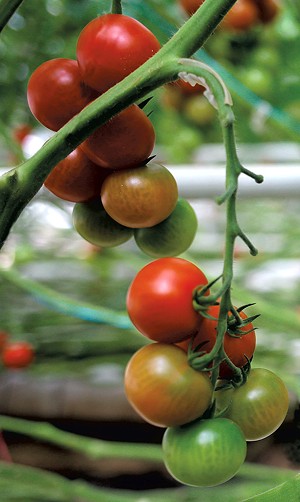
- Sarah Priestap
- Long Wind Farm tomatoes
Proponents of hydroponics — or, as they prefer to call it, "containerized growing" — hailed the NOSB vote as a victory for increased availability of organic food grown using diverse methods. They point out that hydroponics are grown with only organic inputs, such as pesticides and fertilizers approved by the National Organic Program, sometimes in settings where soil growing might not be an option.
But many in the organic farming community, such as Chapman and his mentor, Eliot Coleman, say this practice misses the point completely. To embrace hydroponics is to define "organic" solely as the absence of synthetic inputs, rather than recognizing the positive contributions that soil-based organic agriculture can make to overall environmental health.
"Fertile soil is the cornerstone of organic farming," declared Coleman, a Maine farmer, writer and organic leader. "It's just ridiculous to say it isn't necessary."
Coleman also pointed out that good soil management has always been specified in the USDA's organic standards. "The thing that has caused all of this is not the USDA standards," he said. "It's that the USDA has decided not to enforce them."
The National Organic Program is not legally bound to act on the recommendations of the NOSB, except for those related to the national list of allowable ingredients in organic food. (Even that requirement was recently thrown into question by a precedent-setting USDA decision to permit carrageenan in organic processed foods despite a previous NOSB vote against it.) Still, for those fighting against organic hydroponic certification, the November vote was devastating.
The bigger picture is troubling, too. A series of Washington Post investigative articles last year made credible allegations regarding noncompliance with certification standards by specific large organic dairy and egg operations. The stories also revealed that some of the organic imports flowing in increasing volume from as far away as China were receiving fraudulent certifications from USDA-accredited bodies.
On top of those broader organic certification enforcement issues, the USDA announced in March that it would withdraw the strengthened organic animal-welfare standards that passed during the Obama administration but had yet to be enforced. The USDA press release on the decision cites the growth of the industry under existing organic livestock and poultry regulations, an "approach that balances consumer expectations with the needs of organic producers and handlers."
One thing many consumers expect is low prices. And hydroponic agriculture can deliver them.
What's Wrong With Hydroponic?
From the perspective of some, nothing. Just ask Dave Hartshorn, who has worked on both sides. For the last 25 years, the Waitsfield farmer has raised vegetables and berries organically on 20 acres at his Hartshorn Organic Farm. He's also in his sixth year as a partner in a half-acre hydroponic farm.
The labels of Green Mountain Harvest Hydroponic's lettuce, basil and other greens clearly state they are grown hydroponically. (The watercress, Hartshorn noted, grows naturally in water.) Hartshorn said he uses many of the same organic-approved production inputs and methods on his hydroponic crops that he does on his soil-based outdoor acreage, but he and his partners have no plans to seek organic certification for the hydroponic products.
"It hasn't been our fight, and we don't want it to be our fight," he said.
Hartshorn's goal as a farmer has always been "to produce a crop people want in the safest possible way." It's getting harder and harder, he said, to farm sustainably outdoors with climate extremes such as more frequent flooding and severe hail, as well as new pests. Last year was his worst year ever farming outdoors, he said, and tighter food-safety and water quality-protection regulations "make it even harder."
"We're hedging our bets," Hartshorn said. He believes hydroponic has real potential, affording protection from climate fluctuation and pests, and promising year-round production that enables him to offer steady, better-paying jobs.
With solar-powered electricity and a biomass heating unit, the hydroponic operation produces 20 times the revenue from one-half acre that his soil-grown organic crops do from 20 acres. Green Mountain Harvest Hydroponic currently supports 10 full-time, year-round employees. Hartshorn and his business partners looked into greenhouse growing in soil, he said, but it just didn't produce the numbers. "We need to make a living farming," he added.
Both ways of farming "have their own merit," Hartshorn said. "I'm proud of my organic produce, and I'm proud of my partnership that produces hydroponics."
As for the organic farmers who would ban hydroponics from organic certification, "I respect those guys. I know how it is," he said. "I hate to see a fight between farmers. We're all trying to do the best we can here in Vermont."
A New Label
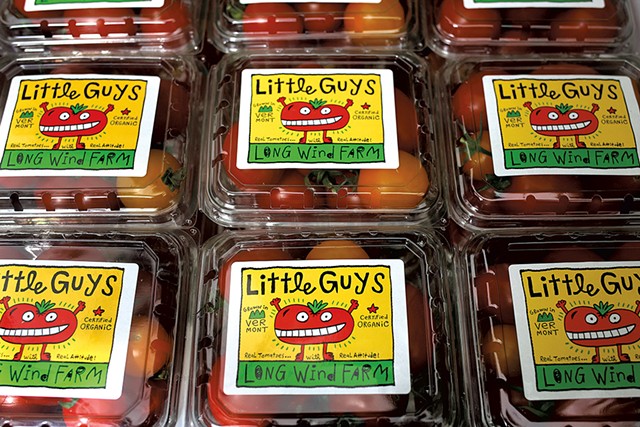
- Sarah Priestap
- Long Wind Farm tomatoes
At the end of March, Chapman chaired a two-day meeting at Lake Morey Resort in Fairlee with nearly two dozen organic farmers and others involved in organic agriculture. They had traveled from around the country to hash out standards for a new, independently managed add-on label to the existing USDA Organic certification.
The group has dubbed itself the Real Organic Project, but its label will have a different name, currently under development.
Like the USDA seal, it will be awarded to producers who pass an inspection by a program-accredited, independent certifying organization, such as the Northeast Organic Farming Association of Vermont, which is also currently one of about 80 USDA organic certifiers. To qualify, farmers must first be certified USDA Organic.
The additional label will go beyond the hydroponic issue to represent core organic principles that Real Organic Project members believe the federal program has abandoned or ignored. Those principles include committing to growing produce in the ground and giving animals real access to pasture, as well as prohibiting CAFOs.
Iowa crop and dairy farmer Francis Thicke is on the standards board for the new effort. He also recently completed a five-year term as one of the 15 appointed volunteers on the NOSB, where he voted against certifying hydroponics last November. Thicke has been an organic farmer for 30 years, holds a PhD in soil fertility and served as national program leader for soil science for the USDA Extension service.
"To be clear," Thicke told Seven Days, "the Real Organic Project is not about abandoning the National Organic Program. This is an add-on organic certification."
"Much of the NOP certification program is still sound and reliable," he said. "For example, the National List of Allowed and Prohibited Substances has been carefully vetted by the NOSB over many years."
The new label, Thicke explained, "will cover areas that the NOP has failed to set rigorous standards for, or where it has refused to adequately enforce existing NOP standards."
As a result, he continued, "Consumers have no easy way of knowing if organic tomatoes on the grocery store shelf are hydroponic, or if organic dairy products are from dairy CAFOs. [Our] label will give consumers the option of selecting organic food that has been produced in accord with real organic farming methods."
Chapman and others involved in the Real Organic Project are not without their critics, even within the old guard.
Among them is Grace Gershuny of Barnet, a longtime organic proponent who worked at the USDA on the original standards. Advocating for another set of standards, she said, "is like shooting yourself in the foot."
Gershuny argues that the overall goal should be to encourage production of as much organic food as possible, not to complain about one type of production that only applies to some crops, or worry about a few bad actors who aren't following the rules.
"What we're talking about is a subset of greenhouse production. Soil is important, and it will continue to be important for the vast majority of what is produced organically," Gershuny said, noting that the crops that cover the most acreage, such as wheat, corn and soy, are not suitable for hydroponic cultivation.
"The organic label can't fix all the problems in our food system," Gershuny said. What people really need to do is "fight like hell to change the way farm policy is structured."
Despite the growth in organic food sales, Gershuny pointed out, only about 1 percent of total global agricultural land is devoted to organics.
Part of the pushback is against "corporate large-scale versus righteous small-scale," she believes, "but that horse left the barn a long time ago. We need those [corporate] guys to be organic. We need to convert as many acres of land to organic production as soon as possible. Those farms are still doing better than conventional."
Shotgun Marriage
If organic advocates don't always agree with one another, the relationship between the organic farming movement and the USDA has always been uneasy, too.
Coleman of Maine was among many farmers who felt skeptical about allowing the federal government to define organic farming after passage of the Organic Foods Production Act of 1990.
"A lot of people were just blown away that the great USDA was paying attention to organic," Coleman said. "But I knew back then that, the minute you define organic in the law, you open it up to people trying to undercut it."
It took more than a decade for the USDA to develop standards and set up a system for enforcing them. The USDA Organic seal set the first consistent national criteria for production and processing of domestic and imported organic foods. Prior to that, states had their own organic programs with different requirements.
The original legislation also called for the creation of the NOSB. Its founding chair was Michael Sligh, a farmer and now director of the Rural Advancement Foundation International-USA's sustainable agriculture program, based in Pittsboro, N.C. "We knew we needed to balance authority and share power," he said. "It was a public-private partnership from the beginning, but it was always a shotgun marriage."
Over the years, many of the old organic guard noted that the smaller-scale organic farming voice on the NOSB declined with the growth of organic and the rise of larger producers and processors.
"There's a lot more politics and money involved — all these other forces influencing how people vote," said Enid Wonnacott, executive director of NOFA-VT, where she has worked for 31 years. "Many members have felt powerless. The system kind of lost honor."
In addition, Wonnacott and Sligh said, loss of funding and staff have weakened the National Organic Program itself. "There is definite lack of USDA leadership and oversight and credibility," Sligh said.
"This was happening before Trump," Wonnacott noted, "but it's gotten worse."
Both Sligh and Wonnacott are working with the Real Organic Project, but they each admit to concerns about the delicate navigation of launching a new add-on label.
"If this wasn't the fastest-growing market in agriculture, we wouldn't be here," said Sligh, referring to sales of organic foods. The question is, he added, "how do we grow the market while protecting the integrity?"
Through his rural development job, Sligh works with many farmers around the globe for whom the U.S. is their single largest market. "These coffee farmers and banana farmers, for the first time in their lives, have a good market," he said. "They are still benefiting from organic."
"In a perfect world, we would try to fix the USDA label and not add another label," Sligh said. "I don't want to abandon the vast majority of farmers for whom [the USDA Organic label] is working, or cause harm to the thousands of farmers who are out there following the letter of the law — or further confuse consumers who will just throw their hands up in the air."
Wonnacott agreed that the decision to create an add-on set of standards has not been an easy or simple one. It's been giving her flashbacks to the '90s, when she was involved in helping develop the federal organic standards. "It feels a bit like [the movie] Groundhog Day," she said.
"What we don't want to have happen is two classes of organic farmers," Wonnacott said. "It's hard to create a new label that's better than X without throwing X under the bus."
Standing for Consumers
Compromised as the federal organic label may be, it's still worth defending, in the view of Charlotte Vallaeys, a senior policy analyst for Consumers Union, the advocacy division of Consumer Reports. She appreciates that farmers are standing up for the transparent, meaningful organic program that she believes consumers deserve.
"The Real Organic Project came out of multiple serious problems with the USDA organic program," Vallaeys said. "Those problems shouldn't be ignored. The problem is with the USDA; it's with the big certifiers and producers who are ignoring the standards."
Vallaeys and her colleagues actively work to defend what they believe are strong consumer labels. While the USDA Organic label has "taken hits," Vallaeys conceded, "we as an organization feel that the organic label is still a meaningful label, a very strong one, and that its integrity is worth protecting."
Through its national surveys of consumer behavior, Consumers Union has gained insight into the reasons why people buy organic, Vallaeys said. Along with the main driver of protecting their own and their family's health, more than half of consumers who said they buy organic often or always think about how animals are treated. About half think about the environmental impacts of food production.
"It's a very good label because it has meant so many things," Vallaeys said. "It's not just 'no pesticides, no antibiotics.'"
One result is particularly relevant to the hydroponic debate. The Consumers Union 2018 food-label survey showed that a majority of those who buy organic regularly said they expect organic-labeled food to have been grown in well-managed soil by farmers who protected its health. "And that's because that's in the [organic] standards," Vallaeys said.
For labels to matter, she added, it's critical that they stay consistent over time. They can get stronger — as would have happened if the Obama-era animal-welfare standards had been implemented — but they should never get weaker.
Regarding the proposed add-on label, Vallaeys said it could be beneficial given the issues with the USDA Organic label. There are already many add-on labels such as "certified humane" and "fair trade," she pointed out.
"In an ideal world, you'd be able to say to consumers, 'The absolute gold standard, the one label to look for that just captures everything that's good about how we want food to be produced in this country, is USDA Organic,'" Vallaeys said. "That would be lovely, but that's not happening. So the next best thing is add-on labels."
More Choices
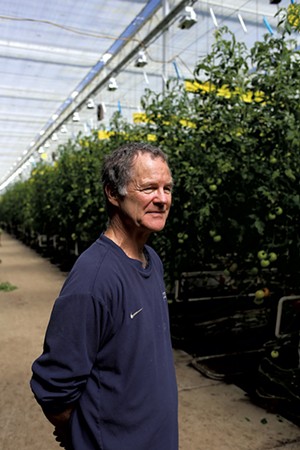
- Sarah Priestap
- Dave Chapman
The past month has been especially busy for Dave Chapman, who really would prefer to get back to growing tomatoes. He estimated that he has spent more than 50 hours a week working on the new standards for the add-on label, as well as talking with the media, sending out detailed updates to his mailing list of several thousand, and flying to Washington, D.C., for congressional meetings as a policy committee member for the Organic Farmers Association. That's a lobbying group sponsored by the Rodale Institute.
"I was up at 3:30 this morning thinking about it all," Chapman said with a weary smile. "But this will pass. We're going to hire an executive director."
The Rodale Institute is also working on its own add-on label, called the Regenerative Organic Certified label, built around standards of soil health, animal welfare and fairness regarding the health and safety of farm workers.
"They're beautiful. They're the North Star," Chapman said of the regenerative standards, "but almost no farmer I know qualifies."
The labor standards, he noted, are very tough to meet, as are tillage requirements for many vegetable farmers.
The standards that the Real Organic Project team is developing, he said, are what the USDA Organic label should be — with stronger animal-welfare requirements and explicit prohibition of hydroponic cultivation. That isn't to say farmers should not aim higher, but it sets a higher floor to start. With the current USDA label, he said, "The floor has dropped so low that it's become subterranean.
"We need a platform everyone can stand on," Chapman continued. "All we're going for is transparency. It's not going to change the world, but at least [our label] will give people the information to make choices."
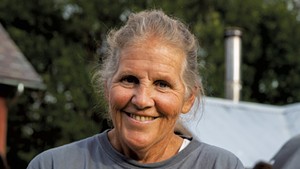




Comments (2)
Showing 1-2 of 2
Comments are closed.
From 2014-2020, Seven Days allowed readers to comment on all stories posted on our website. While we've appreciated the suggestions and insights, right now Seven Days is prioritizing our core mission — producing high-quality, responsible local journalism — over moderating online debates between readers.
To criticize, correct or praise our reporting, please send us a letter to the editor or send us a tip. We’ll check it out and report the results.
Online comments may return when we have better tech tools for managing them. Thanks for reading.